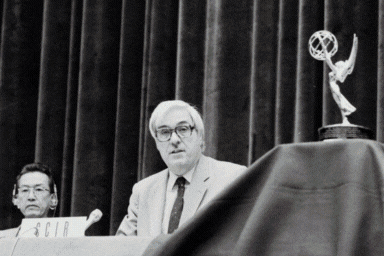- HomeOur storyOur visionJoin us
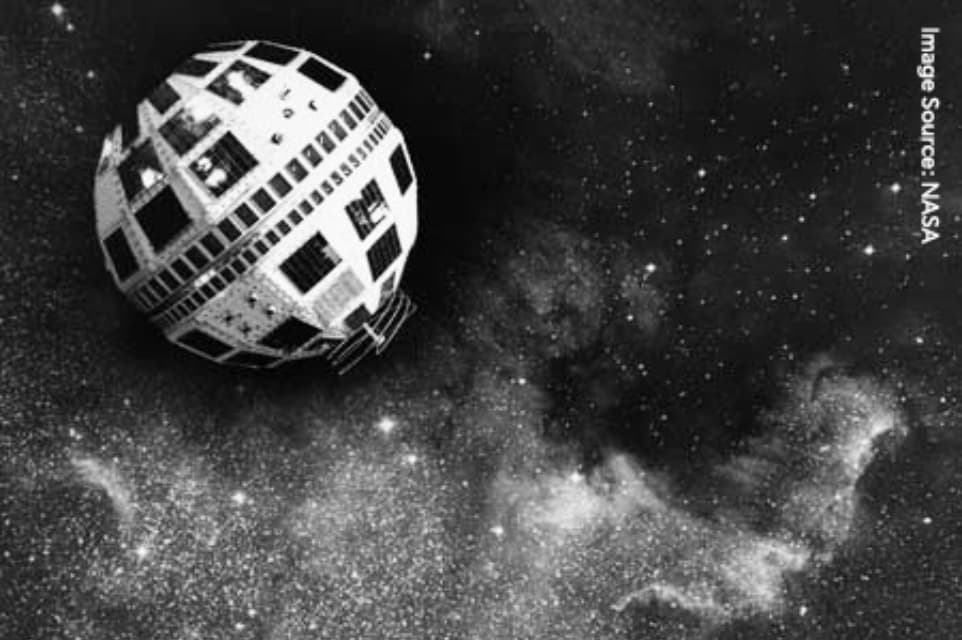
Connecting the world and reaching into space
After the Second World War, ITU’s role expanded to support global social and economic development. As new nations emerged and communications technologies advanced, the organization promoted regional cooperation, addressed the rising demand for telecom services, and facilitated the growth of new systems for the Space Age
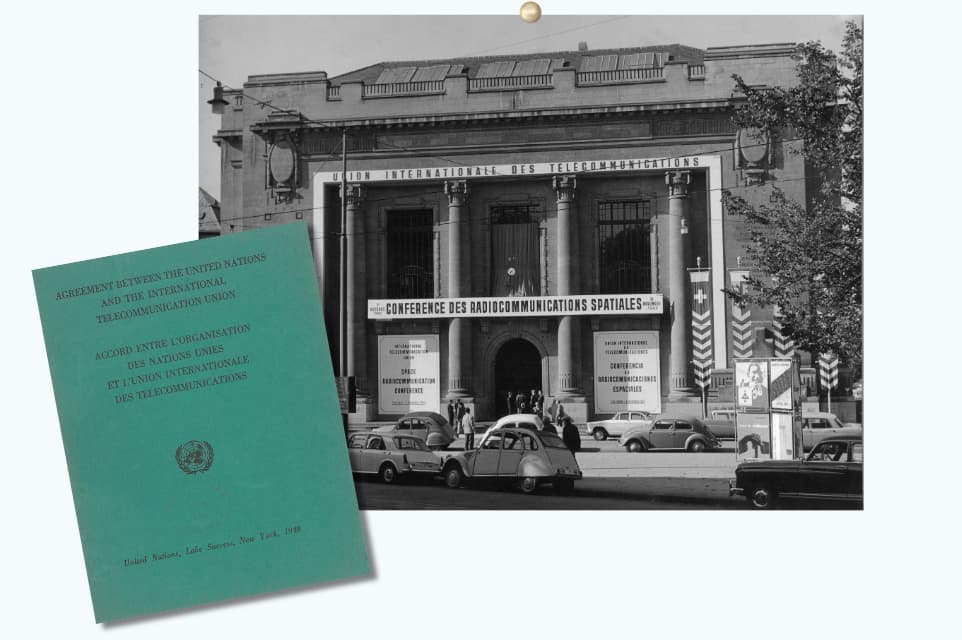
1947
Joining the United Nations
ITU became the United Nations (UN) specialized agency for telecommunications in 1947, enhancing its longstanding role in connecting countries, communities, and people worldwide. UN integration reflected growing recognition of telecommunications as a key asset for social and economic progress, as well as humanitarian operations.
Two years later, ITU moved its headquarters from Bern to Geneva, facilitating closer collaboration with the UN administrative hub and other UN bodies and specialized agencies.For nearly 80 years, ITU has worked within the United Nations system to advance global cooperation in telecommunications, supporting peace, development, and human rights. Partnerships with fellow UN agencies such as the Food and Agriculture Organization (FAO), United Nations Environment Programme (UNEP), World Health Organization (WHO), World Meteorological Organization (WMO), World Intellectual Property Organization (WIPO), and many others, enable ITU to apply its technology expertise to help address global socio-economic challenges.

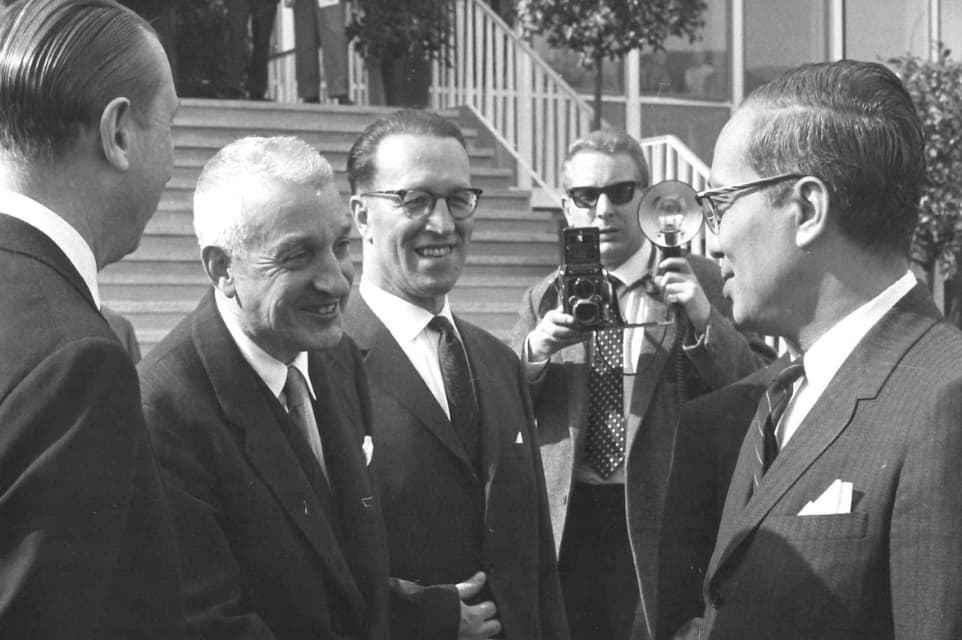
Gerald C. Gross, ITU Secretary-General, welcomes U Thant, Acting UN Secretary-General, to the inauguration of the new ITU Headquarters in May 1962 (Source: UN Photo) In 1948, soon after becoming a UN agency, ITU transferred its headquarters from Bern to Geneva, putting it closer to the UN’s European office, and the many international organizations concentrated in the city’s Nations neighbourhood.

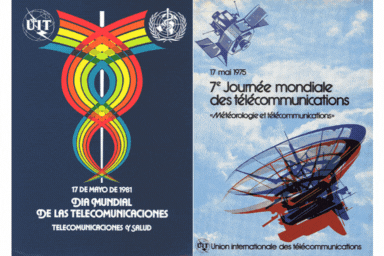
Compilation of posters for World Telecommunication Day, highlighting joint celebrations with other agencies such as WHO, WMO, UNEP, and UNESCO Since becoming a UN agency, ITU has partnered with other UN entities and specialized agencies. Some of these partnerships have been celebrated as themes of World Telecommunication Day, which has been celebrated annually on 17 May since 1969.


ITU Secretary-General Doreen Bogan-Martin, and UN Secretary-General Antonio Guterres at ITU headquarters in 2024 Today, as the UN specialized agency for information and communication technologies, ITU aims to bring digital connectivity to everyone and ensure resilient access for all. In June 2024, Antonio Guterres addressed the ITU Council – the first UN Secretary-General to do so in 71 years.
1949
First steps in enhancing broadcasting
Television, like radio, showed enormous potential as a medium to bring news and entertainment into people’s homes. ITU released its first technical standards for television in 1949.
Today, ITU standards cover all types of sound and image broadcasting, from traditional radio and television to modern multimedia and data transmissions across countless devices. Since the 1980s, ITU experts groups have won six Emmy Awards for technical standards for broadcasting, video, and image coding – testament to remarkable innovation, the relentless pursit of excellence, and successful public-private sector collaboration in advancing telecommunication services and technologies.


An artist’s rendition of Telstar-1, the first active communication satellite (Source: NASA) Telstar, launched by the US National Aeronautical and Space Administration (NASA) in 1962, came to symbolize a new age of space-based telecommunications.

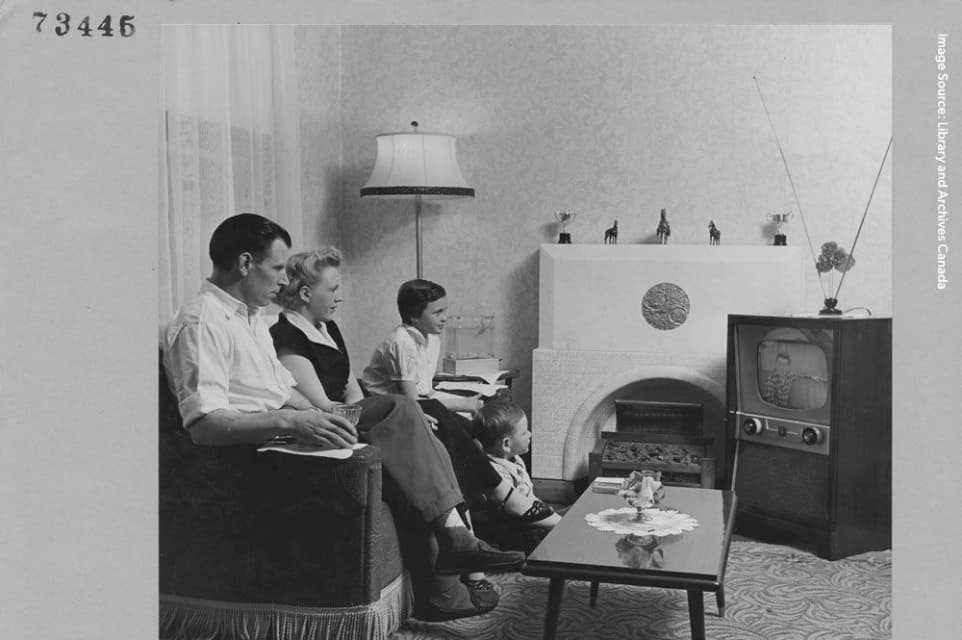
A family in Canada watches television in their home (Source: Library and Archives Canada) By the mid-1960s, live television broadcasts were shared via satellite from countries around the globe. Globally harmonized standards developed by ITU since 1949 have progressively enhanced the television viewing and listening experience.
1950s
Supporting new nations in telecom development
In the 1950s, the United Nations initiated programmes to promote peace through economic and social development. ITU joined these efforts, coordinating technical assistance to roll out national and international telecommunications infrastructure wherever needed. Initially, ITU deployed experts to developing nations to advise in various technological fields and support the training of local personnel. ITU began its own technical assistance programme in 1959 and established a dedicated department in 1960.
This work continues today in the Telecommunication Development Sector (ITU-D), which helps make technologies affordable, accessible and relevant to all. Key programmes include physical infrastructure support, strengthening cybersecurity, teaching or enhancing digital skills, and ensuring accessibility for everyone, including people with special needs. ITU development initiatives also aim to improve regulations and drive innovation in developing countries.

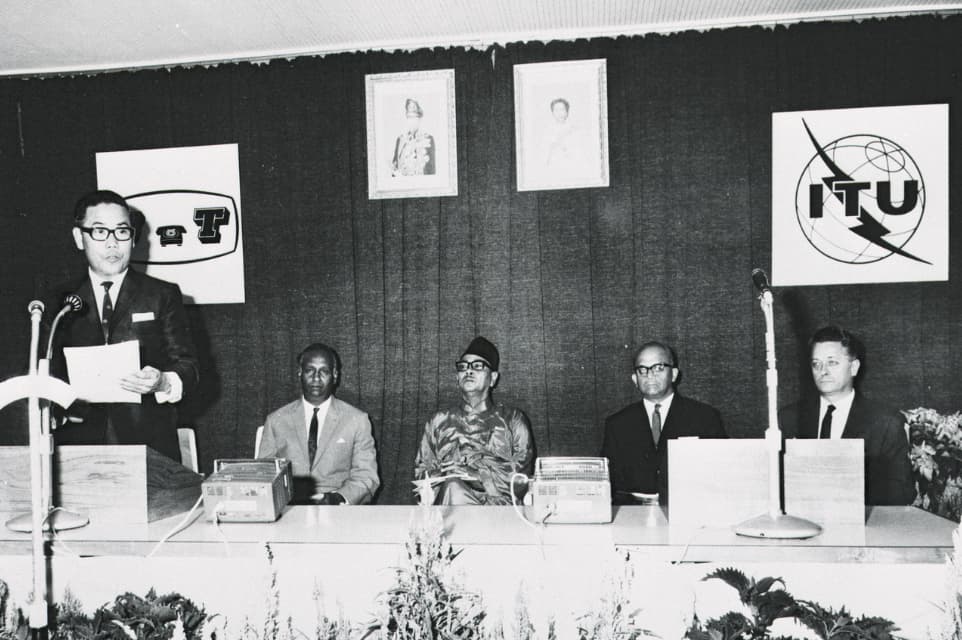
Opening ceremony of the Malaysian Telecommunication Training Centre in Kuala Lumpur in 1966 Rapid tech advances created a growing need for training centres. ITU experts assisted developing countries across all stages, from planning and constructing centres to directly training local experts, thereby transmitting knowledge and skills that could then be passed on to local students.

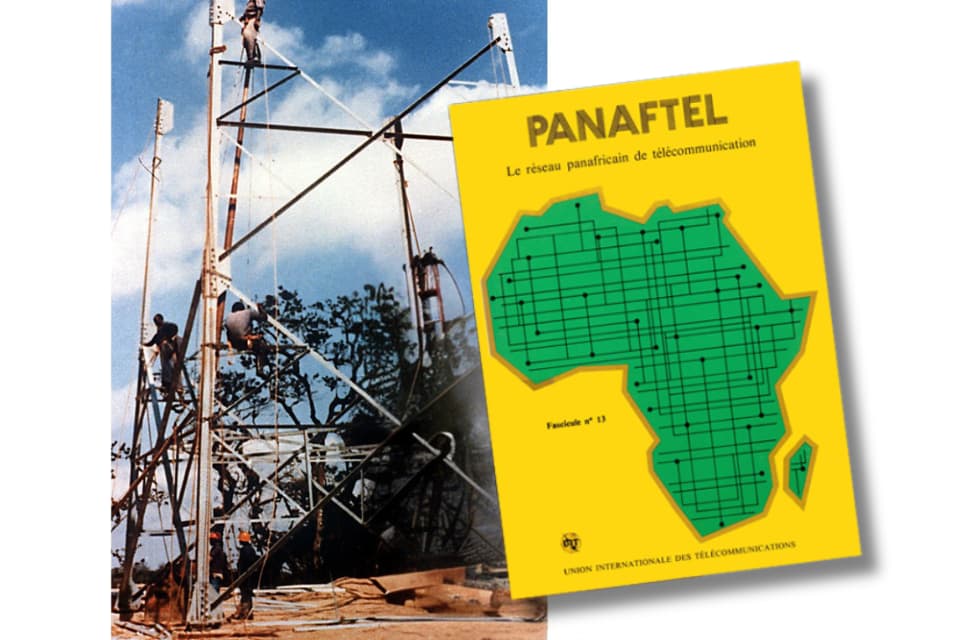
A telecom tower is constructed in Zambia in the early 1980s as part of the Pan-African Telecommunications Network (PANAFTEL) project ITU helped plan the development of new telecom networks in Africa, Latin America and Asia. ITU knowledge-sharing activities brought together key experts from different countries to find practical regional solutions.


Participants taking part in ITU’s Digital Transformation Centres initiative in Ghana in2023 Initially launched in 2019 in partnership with Cisco, the growing network of Digital Transformation Centres equips citizens with digital skills, enabling wider participation in the digital economy. The centres offer training for all skill levels, from individuals who have never used a computer before to those with basic digital literacy and aspiring entrepreneurs looking to strengthen their tech skills.
1963
Space: A new domain for telecommunications
The launch of the first satellites in the late 1950s marked the beginning of the Space Age and introduced a new domain for telecommunications. As space activities expanded, ITU convened its first dedicated conference on space radiocommunications in 1963, bringing together over 400 delegates from 70 countries to revise frequency allocations and designate frequencies for space-based radio services. Along with expanding space services, the conference established ongoing cooperation on space-based technologies.
As satellites became integral to telecommunications, managing orbital slots was essential. Orbital slots, like radio frequencies, are a limited resource requiring international coordination to avoid harmful interference.
Since 1963, ITU radio conferences have continually made spectrum allocations for space services and regulated satellite orbits. ITU continues to provide the regulatory framework for all types spectrum use in space, with allocations evolving to meet changing needs in the satellite industry and other sectors.

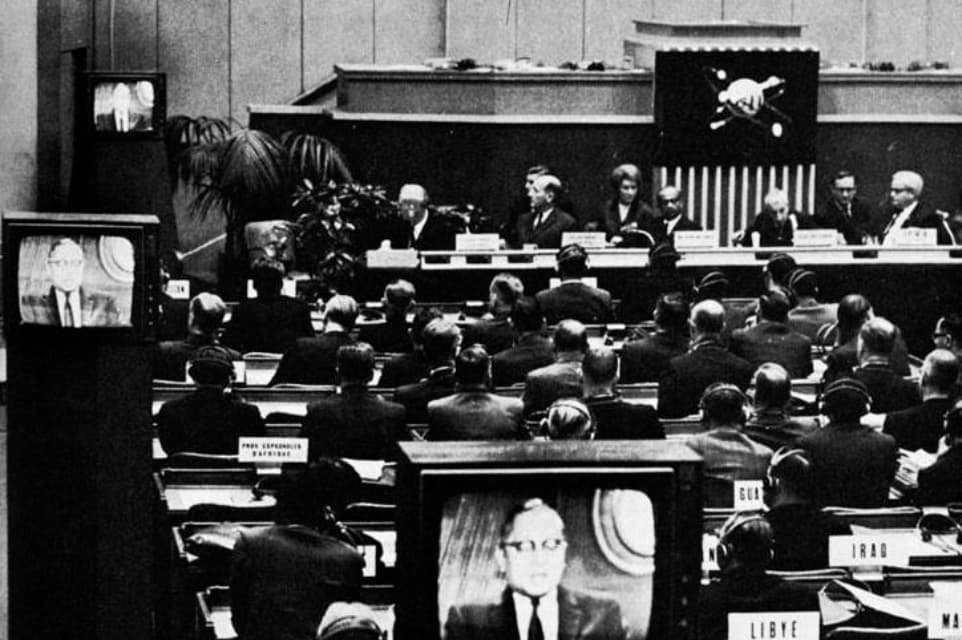
UN Secretary-General U Thant delivers his address via video link to delegates at ITU’s first Space Conference in 1963 The third day of the Space Conference featured a direct exchange of televised messages via the US satellite Telstar. UN Secretary-General U Thantspoke from New York with ITU Secretary-General Gerald C. Gross answering from the conference hall in Geneva.

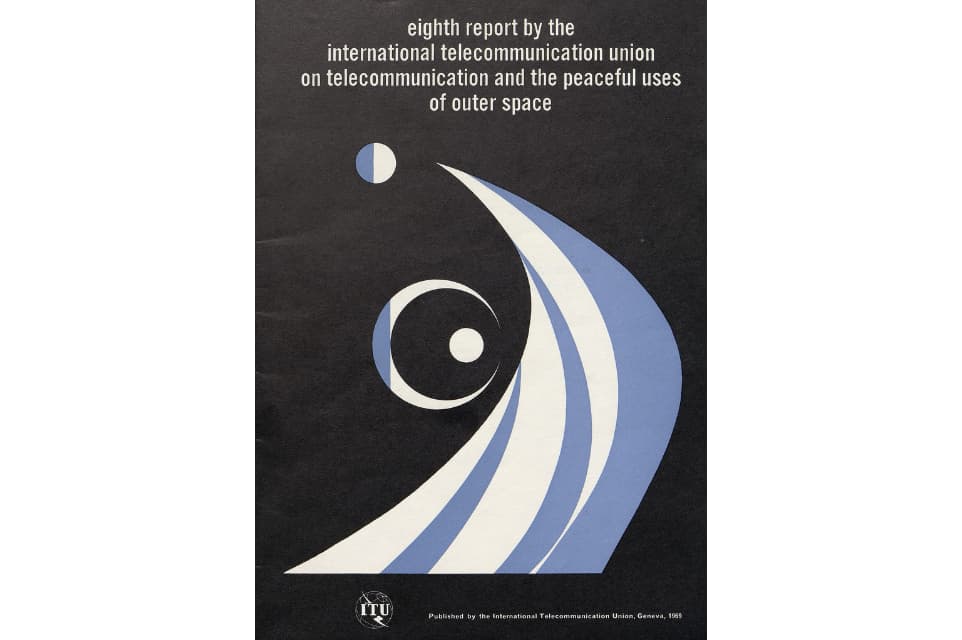
ITU’s 8th Report on Telecommunications and the Peaceful Uses of Outer Space, 1969 In response to a request by the UN General Assembly, ITU produced the Report on Telecommunication and the Peaceful Uses of Outer Space annually from 1962 to 1996. annually from 1962 to 1996. Similar work continues today with ITU’s participation in meetings of the UN’s Committee on the Peaceful Uses of Outer Space (COPUOS).

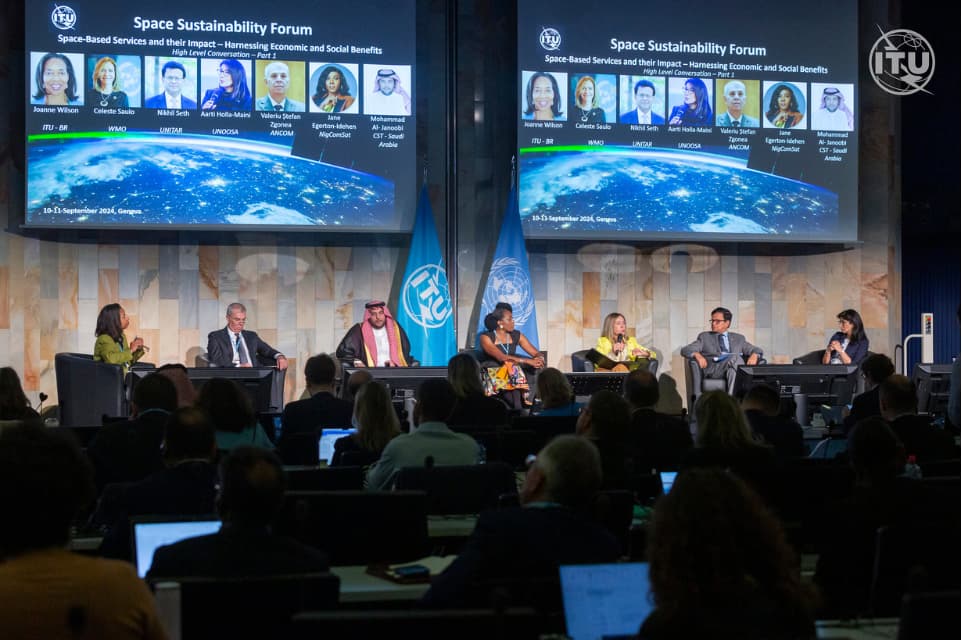
ITU’s Space Sustainability Forum in 2024 ITU’s first Space Sustainability Forum, held in 2024, addressed the economic, scientific, environmental, and humanitarian dimensions of space operations, highlighting how space operations support sustainable development on Earth. The Space Sustainability Gateway launched in 2024 facilitates the access, dissemination, and exchange of information related to sustainability in space.
